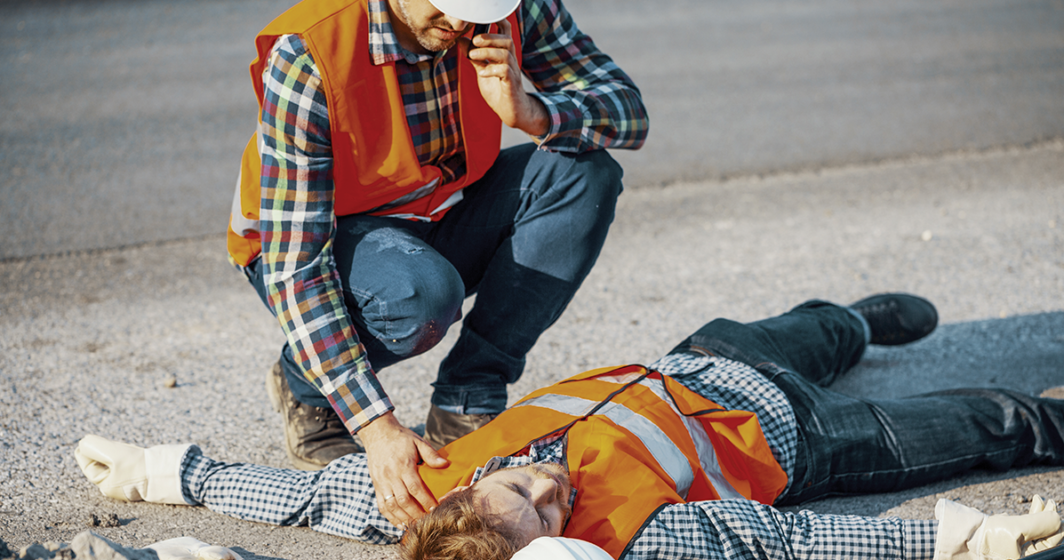New laws will soon push Victorian companies to take workplace safety more seriously than ever before. Kate Jones reports.
Workplace manslaughter will become a criminal offence under Victorian legislation that comes into force from July 1, 2020.
The Victorian parliament introduced the law “because no person deserves to die at work”.
Nationally, 54 workers have been killed at work so far in 2020. The transport, postal and warehousing industry accounts for the majority of deaths at 17, followed closely by construction at 12, according to Safe Work Australia.

At the end of March this year, WorkSafe figures show Victorian workplace deaths had reached 15 - nine more than at the same time last year.
Under the new laws, employers who negligently cause a workplace death will face fines of up to $16.5 million and individuals will face up to 20 years in jail. This includes employers, self-employed people and ‘officers’ of the company or organisation.
Master Plumbers OH&S & Return to Work Manager Frank Geremia said the charge of workplace manslaughter would only apply to the very worst cases of workplace safety.
“A prosecution would only apply to the most egregious of cases where all of the elements are proven,” he said.
“It’s not a given that if someone dies on site that bang, you’re up for industrial manslaughter. It’s not that clear-cut.
“But if there’s a conscious and voluntary neglect of your duty, it does become a clear-cut situation.
“Daniel Andrews is basically saying he wants to make workplaces safer and in doing so, his view and the view of others, was that this would make business owners and corporations take it a lot more seriously.”
Frank said companies that aren’t already prioritising their safety systems, need to do so immediately.
“It’s about changing the culture of a workplace rather than just ticking boxes and saying, ‘Yes we’re compliant’,” he said.
“A well implemented safety plan demands that everyone has buy-in. Employers are encouraged to focus on worker engagement and ensure there is a strong safety culture in place that prevents serious injury and death.
“As an employer, it means if I have a worker who is constantly ignoring their duties, I need to address that. I need to address that through education, through systems, through plant and equipment.
“If none of that works, then disciplinary action needs to be taken with that person.”
Similar laws have already been introduced in Queensland, the ACT and Northern Territory.
Last year, the Queensland government levelled its first industrial manslaughter charge at Brisbane Auto Recycling after a worker was hit and killed by a reversing forklift in May. The matter is still before the courts.
MinterEllison partners Samantha Betzien and Deanna McMaster, both experts in industrial relations, said while the new laws haven’t sparked a rush of prosecutions in other states, they have put a renewed focus on workplace safety.
“It is fair to say that the regulators have used the discretion to prosecute under these provisions very cautiously,” they said.
“The introduction of the industrial manslaughter offence in Queensland has not resulted in a spate of prosecutions for these offences.
There has only been one successful prosecution for industrial manslaughter to date in Queensland.”
Although the new charge of workplace manslaughter does not mean companies have to implement extra safety rules at workplaces, it does mean they need to take a closer look at safety measures to ensure they are up to standard.
“The industrial manslaughter provisions did not introduce any additional safety obligations on top of those which already applied to employers,” Betzien and McMaster explained.
“In this respect, the steps that employers need to take to comply with safety legislation remain the same. However, the provisions do up the stakes in terms of the potential consequences for an employer and its senior managers if a fatality occurs in the workplace and the standard of care required under the industrial manslaughter provisions has not been met.
“The introduction of this offence of industrial manslaughter reflects a broader shift in the regulatory climate and significant increase in regulatory activity. We have seen this change consistently across almost all Australian states and territories with increases in the issuing of improvement notices and commencement of prosecutions generally.
“Now more than ever safety must be a key priority at all levels of management and leadership must focus on and set the organisational safety culture.” In light of the new laws, plumbers and plumbing companies are urged to assess their work health and safety systems, review organisational training and ensure there is an overall culture of safety.
Any improvements that can be made could not only minimise the risk of a criminal charge, but prevent a tragedy.
How companies can protect themselves
Safe Work Australia class Construction a high-risk industry.
A comprehensive review of safety systems will help companies protect their workers and minimise breaches of workplace health and safety standards.
Get started by assessing and if needed, updating:
- OH&S policy statement
- OH&S procedures
- Site coordination plans
- Safe Work Method Statements
- OH&S Registers
- Training manuals and implementation
Master Plumbers’ Occupational Health and Safety Manager can audit workplace safety systems and help members with compliance documents and information on safe work practices, including:
- Creating, implementing and managing an effective Work Health & Safety Management System to ensure a safe work environment
- Creating and implementing Safe Work Method Statements
- Providing hazard management strategy advice
- Providing advice on the managing of PIN’s (Provisional Improvement Notice’s) from WorkSafe Victoria
- Managing an injured employee back to work
- Managing a WorkCover Claim
- Providing WHS legal advice / support guidance • OH&S plans at a reduced price for members
Share this Article






